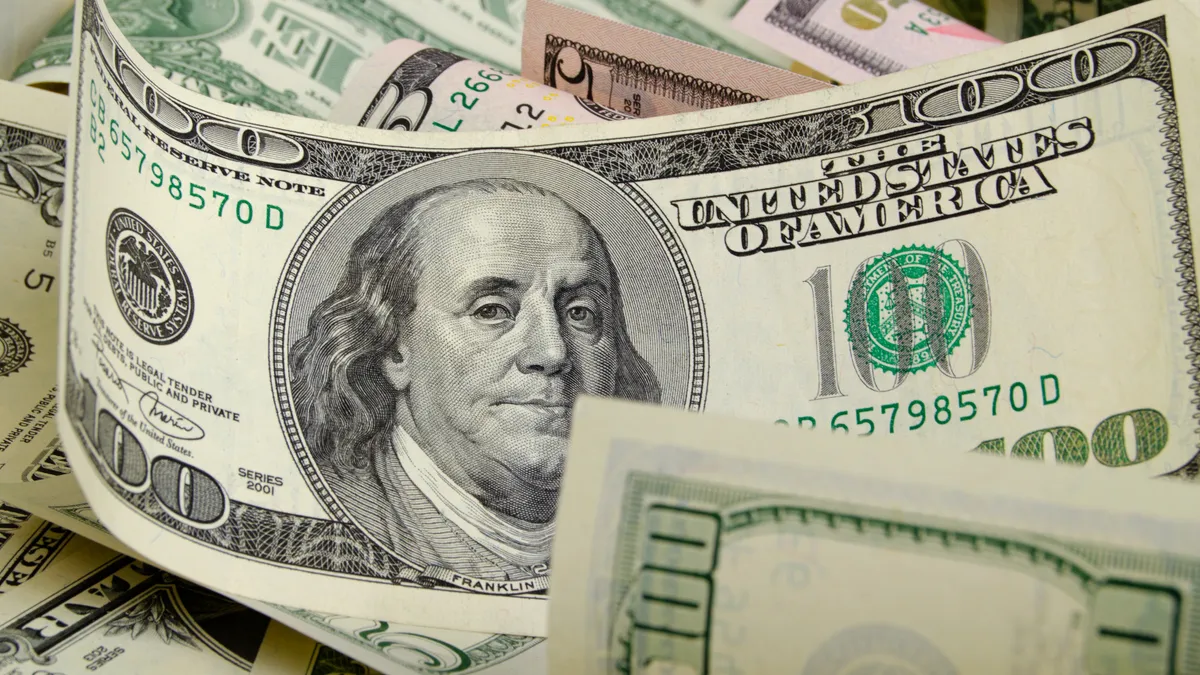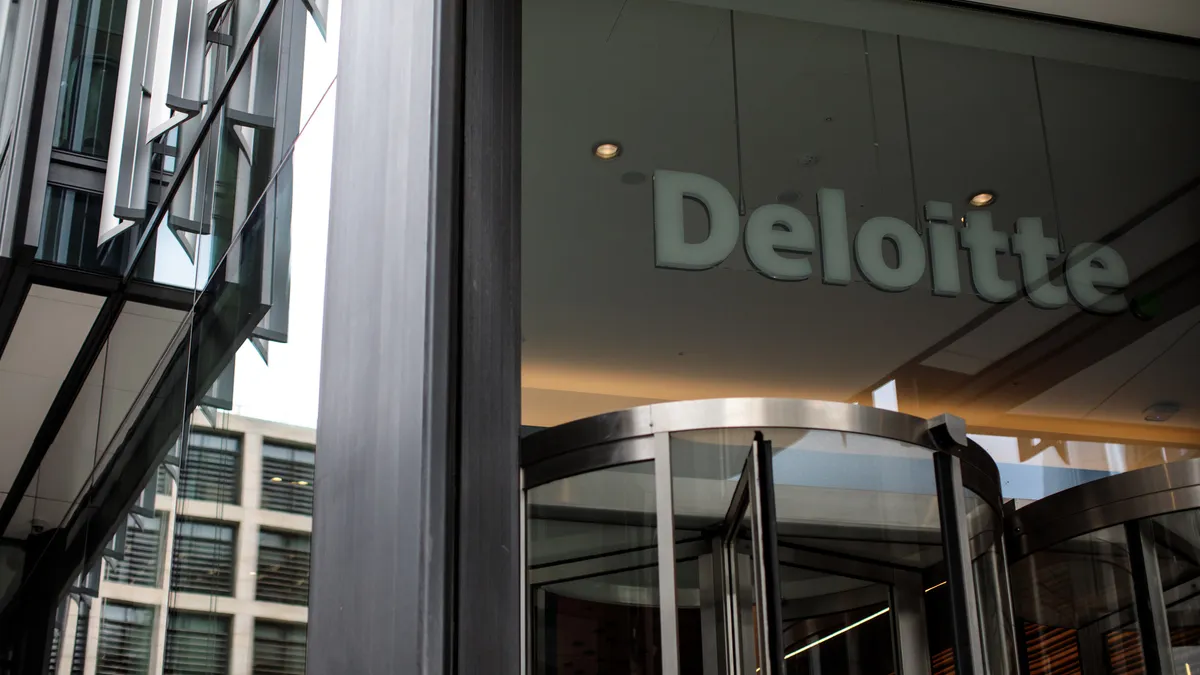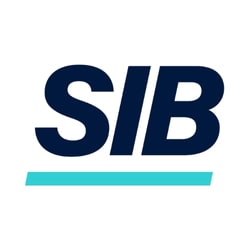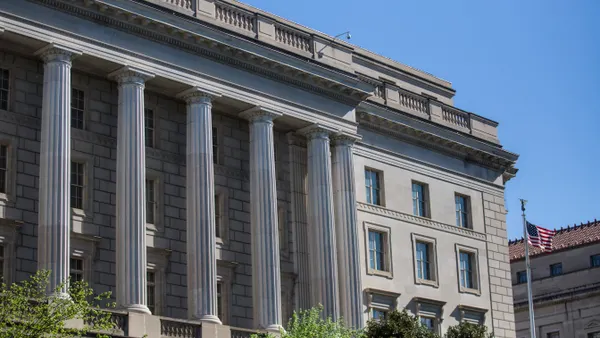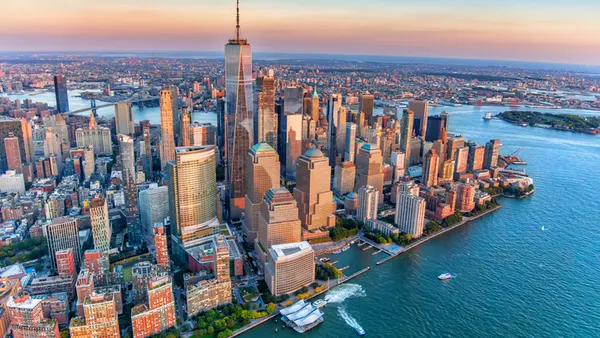Dive Brief:
- Inflation will likely persist above the Federal Reserve’s 2% goal beyond 2026, most economists told the National Association for Business Economics in a survey, as job market weakness prompts Fed policymakers to weigh cutting borrowing costs as soon as mid-September despite risks of stoking price pressures.
- Fifty-six percent of surveyed economists forecast that inflation, as measured by the personal consumption expenditures price index, will not fall to 2% before 2027, an increase from 45% of respondents who held that view in March, the NABE said Monday.
- Still, “most respondents expect the Fed’s Federal Open Market Committee to reduce short-term rates by half a percentage point or more before the end of 2025,” Sarah Wolfe, senior economist for thematic and macro investing at Morgan Stanley Wealth Management, said in a statement.
Dive Insight:
Fed Chair Jerome Powell on Friday, while voicing concern about tariff-induced inflation, flagged signs of job market weakness and signaled that the central bank at its next policy meeting on Sept. 16-17 may need to trim the main interest rate for the first time this year.
“Downside risks to employment are rising,” Powell said in a speech. “If those risks materialize, they can do so quickly in the form of sharply higher layoffs and rising unemployment.”
At the same time, Powell said that “near term risks to inflation are tilted to the upside” and may intensify if tariffs spur a lasting inflationary spiral.
Policymakers face “a challenging situation” as they confront both the likelihood of higher inflation and “downside” risks to employment, Powell said. He estimated that PCE excluding volatile food and energy prices likely rose 2.9% last month, inching up from 2.8% in June.
Tariffs set this year by the Trump administration will probably push up inflation by 0.5 percentage point and slow economic growth by the same amount, most economists surveyed by the NABE said.
Yet many survey respondents postponed their forecast date for the start of a recession, with 35% expecting a downturn to begin in 2027 or later, an increase from 25% during the prior survey in March, the NABE said. Seventeen percent expect a recession to start during the second half of this year, a decrease from 19% in March.
When asked to rank the three most important policy challenges that the Trump administration should tackle in coming years, 60% of surveyed economists identified reducing the federal budget deficit, 40% called for immigration reform and 36% listed sustaining economic growth, the NABE said.
Economists “expressed less confidence in the current stance of both fiscal and monetary policy than in the March 2025 survey,” Ford Motor Company Chief Economist Emily Kolinski Morris said in a statement.
Six out of 10 economists surveyed deem fiscal policy as “too stimulative,” an increase from 50% in the March survey and the largest share in seven years, the NABE said.
Nearly four out of five surveyed economists believe that the fiscal costs of the Trump-initiated tax-and-spending legislation passed by Congress last month outweigh its benefits to the economy, Wolfe said during a NABE webcast.
“What I find so incredible about this is that we’re at a high in many years of how many people think that fiscal policy is too stimulative,” even when compared with periods of substantial federal spending earlier this decade, she said.



